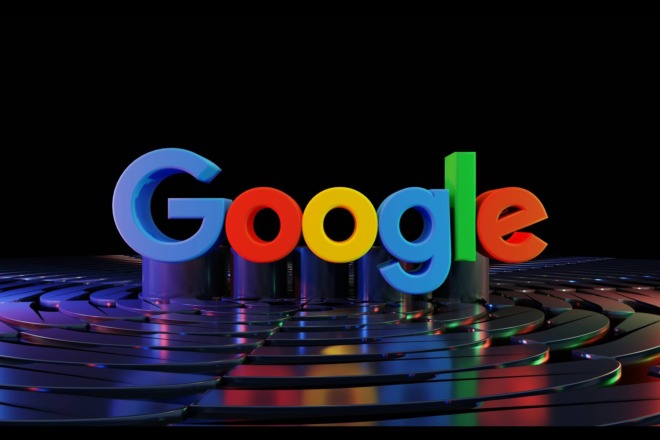Launching a brand is a high-stakes opportunity to set the tone for a business. A well-planned brand launch grabs attention and builds a foundation for long-term success. Whether launching a product, service, or company, making a great first impression requires strategic preparation and flawless execution.
- Define a Strong Brand Identity
A clear brand identity is the backbone of a successful branding launch. A brand’s identity should communicate a company’s mission, values, and what sets them apart from competitors. To get started:
- Create a brand style guide: This includes a logo, typography, color palette, and tone of voice. Consistency is key.
- Identify the USP: A unique selling proposition (USP) sets a brand apart, highlighting a key benefit or value competitors don’t offer. For example, Warby Parker disrupted the eyewear industry by emphasizing affordability and social impact, two values that resonated deeply with their audience.
- Focus on the brand’s audience: Conduct surveys or focus groups to ensure the brand resonates with its target audience. Consumers prefer buying from brands that share their values.
Defining a cohesive identity can help a brand launch project professionalism and credibility.
- Research the Market Thoroughly
Understanding the market ensures a branding launch addresses real needs and stands out. Conduct comprehensive market research to identify the brand’s target audience and their pain points and buying behaviors. Actionable steps include:
- Analyze competitors: Use tools like SEMrush or SimilarWeb to evaluate competitors’ digital strategies. Understand their strengths and weaknesses to identify opportunities.
- Segment the audience: Divide the target market into personas based on demographics, psychographics, and buying behaviors. This ensures tailored messaging.
- Test messaging before the launch: Use A/B testing on platforms like Facebook Ads to gauge which headlines, visuals, or offers resonate most.
Market research ensures a brand’s introduction is relevant and impactful.
- Develop a Comprehensive Launch Plan
A structured plan keeps a brand launch on track. It should include timelines, budgets, and performance goals. Follow these tips:
- Set SMART goals: Follow one of the most known goal frameworks — make sure all objectives are Specific, Measurable, Achievable, Relevant, and Time-bound (SMART). For example, aim to gain 1,000 Instagram followers within the first month of launch.
- Outline channels: Decide whether the launch will focus on digital platforms, physical events, or both. For instance, Glossier leveraged Instagram to build anticipation for its beauty products.
- Prepare for contingencies: Identify potential risks — like supply chain delays — and develop backup plans.
A detailed roadmap ensures smooth execution and measurable results.
- Craft a Memorable Brand Story
Stories connect people to brands emotionally. A compelling brand story makes a branding launch relatable and memorable. Here are some steps to create this story:
- Identify the brand’s “why”: Why does the brand exist? Simon Sinek’s “Start with Why” framework emphasizes that purpose-driven brands outperform competitors.
- Focus on authenticity: Share personal anecdotes or challenges the business overcame. For example, TOMS Shoes’ “One for One” story about donating shoes resonated with socially conscious buyers.
- Use visuals: Pair the story with engaging videos, photos, or infographics to evoke emotion.
A great story turns a brand launch into an experience people remember.
- Build a Strong Online Presence
An online presence is nonnegotiable for modern brands. A brand’s digital footprint should create excitement and drive engagement during its branding launch. Consider these steps:
- Launch a dedicated website: Ensure it’s mobile-friendly and optimized for search engines (SEO). Include clear calls-to-action, such as “Subscribe for Launch Updates.”
- Leverage social media: Create branded hashtags and post teaser content. For instance, Apple generates excitement with cryptic tweets and countdowns before product launches.
- Invest in paid ads: Platforms like Google Ads or Facebook Ads allow hyper-targeted campaigns to reach specific audiences.
An engaging online presence builds anticipation and drives traffic.
- Create Pre-Launch Buzz
Building excitement before a brand launch ensures the event starts with an engaged audience. Use these strategies:
- Offer sneak peeks: Share behind-the-scenes content on Instagram Stories or TikTok. Show how the product is made or reveal the packaging.
- Collaborate with influencers: Partner with micro-influencers whose followers align with the brand’s target audience. A study found that influencer marketing generates $5.20 for every dollar spent.
- Launch a waitlist: Offer early access or exclusive discounts for people who sign up before the launch.
Anticipation turns potential customers into loyal advocates.
- Leverage PR and Media Outreach
Getting media coverage amplifies a branding launch. Journalists, bloggers, and industry publications can spread the message to a wider audience. Steps include:
- Write a compelling press release: Highlight what makes the brand newsworthy. Include statistics or quotes from company leaders.
- Pitch to relevant outlets: Research journalists who cover the industry and use tools like HARO (Help a Reporter Out) to connect with them.
- Offer exclusives: Provide interviews to top-tier publications to secure coverage.
Media attention builds credibility and attracts new customers.
- Plan a Memorable Launch Event
Whether virtual or in-person, a launch event can create buzz and engage attendees. To ensure success:
- Focus on experience: Provide interactive elements like live demonstrations or Q&A sessions.
- Invite key stakeholders: Include influencers, journalists, and loyal customers. Their participation amplifies a brand’s reach.
- Create shareable moments: Design photo booths or branded backdrops to encourage attendees to post on social media.
A well-executed event cements a brand in the minds of attendees.
- Monitor Metrics Post-Launch
The work doesn’t end with the brand launch. Measuring success ensures continuous improvement. Key steps include:
- Track digital analytics: Use tools like Google Analytics to monitor website traffic, conversion rates, and user behavior.
- Collect feedback: Conduct surveys to understand customer impressions. What did they love? What needs improvement?
- Adjust strategies: If engagement on one platform underperforms, reallocate resources to more effective channels.
Continuous monitoring ensures a branding launch evolves with a specific audience’s needs.
Case Study: Coca-Cola’s “Share a Coke” Campaign
Coca-Cola’s personalized bottle campaign is a prime example of a successful branding launch. Replacing its logo with popular names fostered emotional connections and increased sales by 4% in the U.S. alone. The campaign also leveraged social media effectively by encouraging customers to share photos of their personalized bottles, creating a viral moment that amplified brand visibility.
Additionally, Coca-Cola localized the campaign by featuring culturally relevant names in different regions, further enhancing its appeal. This approach demonstrates the power of personalization, storytelling, and audience engagement in making a branding launch memorable and impactful.
Setting the Stage for Long-Term Brand Success
An excellent first impression during a brand launch sets the stage for lasting success. Defining a brand’s identity, creating buzz, and leveraging digital tools allow businesses to introduce their brands confidently and effectively. Remember, every detail counts — invest in planning, execute with precision, and adapt based on feedback.
About The Author
Eleanor Hecks is the Editor-in-Chief of Designerly Magazine, an online publication dedicated to providing in-depth content from the design and marketing industries. When she's not designing or writing code, you can find her exploring the outdoors with her husband and dog in their RV, burning calories at a local Zumba class, or curled up with a good book with her cats Gem and Cali.
You can find more of Eleanor's work at www.eleanorhecks.com.


